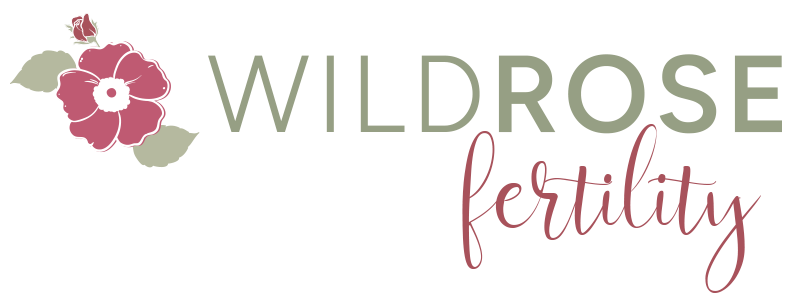Endometriosis is a chronic inflammatory pain condition, in which tissue that normally grows and stays in the lining of the uterus (endometrium) travels and implants outside the uterus. It can migrate to other organs in the pelvic cavity, such as the cervix, fallopian tubes and bladder, and spread to other areas of the body. Endometrial cells respond to hormones (estrogen and progesterone) and bleed during menstruation, but since the lesions are in other locations in the body they cannot exit, which stagnates the blood, causing inflammation and potentially damaging adjacent tissues. (Lewis, 2008)
Symptoms include chronic pelvic pain, dyspareunia, dysmenorrhea, dysuria, dyschezia and infertility. (Xu, Y., Zhao, W., Li, T., et al., 2017) Endometriosis affects approximately 5- 15% of women of reproductive years, worldwide. (Lund & Lundeberg, 2016) Western medicine offers women hormonal therapy, surgical removal of endometrial lesions, hysterectomy, and NSAID’s for pain relief as treatment options.
TCM Description
Traditional Chinese Medicine (TCM) examines endometriosis through several disease categories: ‘painful periods’ (Tong Jing), ‘heavy periods’ (Yue Jing Guo Duo), ‘flooding and trickling’ (Beng Lou) and ‘abdominal masses’ (Zheng Jia). (Maciocia, 2011)
TCM treats both the root (the Ben) and as well as the branch (the Biao). The Ben is always treated, and the Biao is emphasized only if menstruation is painful and pelvic pain persists throughout the month. Kidney deficiency (yin or yang) with disharmony of the Liver and Spleen and blood stasis are always present. There is often cold, dampness, damp-phlegm and retention of menses. I’ve also seen Spleen Qi xu, Liver Qi stagnation (with or without heat) as contributing factors.
The main full patterns are blood stasis, cold in the uterus, dampness and damp-phlegm. The main empty patterns are kidney deficiency and blood deficiency. TCM views the insufficiency of yang growth in phase 4 of menstruation as a contributing factor to yin factors not being expelled (blood stasis, dampness or phlegm) as a primary pathology. (Maciocia, 2011)
Research
According to several studies on pain from endometriosis and acupuncture, all reported decreased amounts of pain. It was interesting to note that several studies had different research designs, evaluation instruments and needle stimulation techniques. However, there were methodological similarities. Each patient received seven to 12 needles per session with a 15-25 minute needle retention time. All patients reported lower pain intensity and lower pain disability after acupuncture treatment. The acupuncture-treated groups also reported a decrease in analgesic intake and stress. One study reported an increase in social activity and attendance in school activity after regular acupuncture treatments. (Lund & Lundeberg, 2016)
Another study examined Japanese style acupuncture on adolescence with endometriosis related pelvic pain, which demonstrated a reduction in pain and improved health related quality of life (HRQOL). (Wayne et al., 2008) But this study had a very small sample size and other limitations. More research is needed in this promising area.
Multidisciplinary Approach
I have found an integrated approach to be very effective in the treatment and management of endometriosis. Treatment modalities include five steps: regular acupuncture treatments with adjunctive therapies, dietary and lifestyle modifications, herbal medicine, nutraceuticals, and castor oil packs. These treatment strategies are focused on moving blood and clear stasis, reducing endometrial lesions and inflammation, stopping pain, remove triggers and restoring hormonal balance.
Regular acupuncture treatments which alternate between front treatments with infrared heat on the lower abdomen and back acupuncture treatments are done weekly or biweekly. Acupuncture has been clinically proven to reduce endometriosis related pain and reduce serum and peritoneal levels of CA-125 (a marker of epithelial cell ovarian cancer). (Xu et al., 2017) Several studies on acupuncture and endometriosis related pain reported no side effects (Lund & Lundeberg, 2016), which is significant considering the western medical treatment options.
Acupuncture can improve Qi and blood circulation in the uterus as well as improve the function of the nervous system. (Liang et al., 2018) Traditional Chinese medicine acupuncture points are chosen based on pattern and typically include: SP4/PC6, SP 10, SP6, LR5, KD 14, LU7/KD6, LR3/LI4, Ren 4, ST29, BL 17 among others. Cupping helps to directly invigorate and move the blood and Qi and remove stasis while the TDP lamp increases Qi and Blood flow to the uterus and warms the lower jiao.
Dietary research shows promising evidence for those suffering with endometriosis. Current studies suggest oxidative stress is involved in the pathogenesis and pathophysiology of endometriosis. Therefore, an antioxidant rich diet with a high intake of vegetables, fruit (no more than 1 servings/day), legumes and whole grains is associated with decreased risk of developing endometriosis. The nutrients rich in these diets can act on gene expression and influence DNA methylation. Additionally, diets high in vegetables and fruits contribute to the excretion of estrogen, which aids hormone regulation and can help in managing this disease. Diets that lack these nutrients show shifts in lipid metabolism, oxidative stress and epigenetic abnormalities. (Halpern et al., 2015)
I recommend a Mediterranean style diet with an emphasis on plant based whole foods and includes anti-inflammatory spices such as turmeric and ginger root. Consumption of red meat, cold cuts, sausages and foods containing hydrogenated vegetable fat is recognized as a risk factor for developing endometriosis. Red meat has higher concentrations of estradiol and estrone sulfate, which increases circulating levels of steroids in the body, and also contains arachidonic acid, which increases inflammation, in excess. Red meat also contains dioxins that disrupt the endocrine system. (Halpern et al., 2015)
Lifestyle changes can help to remove triggers and inflammation. Removing plastics from the diet is important, such as plastic water bottles and storing food in plastic. Avoiding personal care products with endocrine disrupting chemicals are important, too.
Herbal therapy includes herbs and formulas that dispel blood stasis, disperse masses, invigorate blood circulation, alleviate pain, and reduce inflammation. Many herbs have an antiproliferative effect to inhibit abnormal growth of connective tissue, dissolve masses and nodules and the ability to resolve cysts and fibroids in the uterus and ovaries. Formulas are chosen based on both the root and branch.
Several nutraceuticals are very supportive for hormone balance, reducing inflammation and oxidative stress. I often recommend DIM, curcumin, and melatonin.
Castor oil applied to the lower abdomen with a heating pad placed over can break up stagnation and move blood in the female reproductive area, soften masses and prevent the buildup of excess endometrial tissue, increase circulation, reduce inflammation, and restore normal periods. This is done three-four times per week except during menstruation.
Conclusion
Endometriosis is a multi-factorial pain condition that can be challenging to treat. There are often comorbidities and sometimes a history of trauma. I’ve had patients come into my office with recommendations for a hysterectomy and chronic, daily pelvic pain (8 out of 10 pain scale) and now are living basically pain free with an occasional flair from using this approach.
This dynamic method addresses both the root and branch and takes considerable effort on the part of the patient, which one must be motivated to do. Results are seen relatively quickly, however treatments and dietary changes need to be sustained for maintenance. By creating a supportive environment with targeted and continuous care I’ve seen it is possible successfully treat endometriosis naturally. Women can live pain free and avoid an unnecessary major surgery or a lifetime of hormonal therapy. Imagine being diagnosed with endo and jumping like the lady in the above image. It’s possible!
Contact us for an individualized approach to managing your endometriosis.
References
Halpern, G., Schor, E., & Kopelman, A. (2015). Nutritional aspects related to endometriosis. Revista da Associação Médica Brasileira, 61(6), 519- 523. https://doi.org/10.1590/1806-9282.61.06.519
Lewis, R. (2008). The infertility cure: The ancient Chinese wellness program for getting pregnant and having healthy babies. Little, Brown Spark.
Liang, R., Li, P., Peng, X., Xu, L., Fan, P., Peng, J., Zhou, X., Xiao, C., & Jiang, M. (2018). Efficacy of acupuncture on pelvic pain in patients with endometriosis: Study protocol for a randomized, single-blind, multi-center, placebo-controlled
trial. Trials, 19(1). https://doi.org/10.1186/s13063-018-2684-6
Lund, I., & Lundeberg, T. (2016). Is acupuncture effective in the treatment of pain in endometriosis? Journal of Pain Research, 157. https://doi.org/10.2147/jpr.s55580
Maciocia, G. (2011). Obstetrics and Gynecology in Chinese Medicine. Churchill Livingstone Elsevier.
Wayne, P. M., Kerr, C. E., Schnyer, R. N., Legedza, A. T., Savetsky-German, J., Shields, M. H., Buring, J. E., Davis, R. B., Conboy, L. A., Highfield, E., Parton, B., Thomas, P., & Laufer, M. R. (2008). Japanese-style acupuncture for endometriosis-related pelvic pain in adolescents and young women: Results of a randomized sham-controlled trial. Journal of Pediatric and Adolescent Gynecology, 21(5), 247-
257. https://doi.org/10.1016/j.jpag.2007.07.008
Xu, Y., Zhao, W., Li, T., Zhao, Y., Bu, H., & Song, S. (2017). Effects of acupuncture for the treatment of endometriosis-related pain: A systematic review and meta-analysis. PLOS ONE, 12(10), e0186616. https://doi.org/10.1371/journal.pone.0186616

